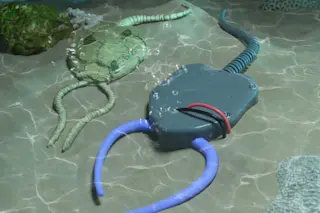: Scientists have discovered a new technique for linking semiconducting tubes with mouse nerve cell tendrils: They let the cells do the work for them. After creating biologically friendly semiconductor tubes, they found that nerve cells' tendril-like axons didn't shy away. "They seem to like the tubes," University of Wisconsin-Madison biomedical engineer Justin Williams told Science News. This represents a step toward new technology involving computer-brain networks. How the Heck: The trick was to create tubes of layered germanium and silicone (which insulate the nerve's electrical signals) that were big enough for the nerve cell's threadlike projections to enter but too small for the cell body: When seeded with live mouse nerve cells, the only way the cells could interact with the tubes was be sending tendrils into it---which is just what they did. What's the Context:
What's the News
This research builds upon some work done in previous studies, ...













